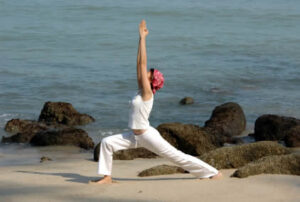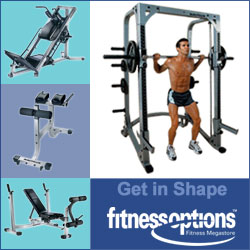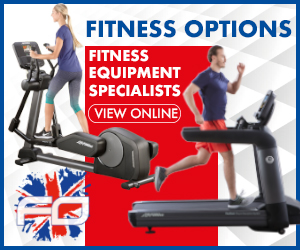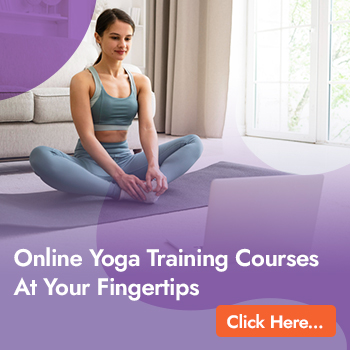
Key Points
- For those wondering what are the different types of yoga, Hatha yoga is a great starting point for beginners because it concentrates on basic poses and correct alignment.
- Vinyasa yoga is a dynamic practice that connects breath to movement, providing cardiovascular benefits while increasing strength and flexibility.
- Restorative and Yin styles are important for balance, offering slow paced, deep stretch practices that counterbalance more active yoga styles.
- Hot yoga and Bikram provide intense experiences in heated rooms, which can improve flexibility, but beginners should take the necessary precautions.
- Finding the right style of yoga is a personal journey what works for one person may not work for another, so experimentation is key to finding your ideal practice.
Standing on the precipice of your yoga journey can feel simultaneously thrilling and daunting. With the myriad of yoga styles available today, finding your ideal match doesn’t have to be a difficult task.
Yoga is much more than just touching your toes or standing on your head. It’s a transformative practice that connects your mind, body, and breath in ways that can have a profound impact on your life. Whether you’re looking for stress relief, improved flexibility, or a spiritual practice, there’s a yoga style that’s just right for your specific needs and goals.
Quick Overview: Begin Your Yoga Journey Here
Yoga, a practice that has been around for 5,000 years, has developed into a variety of styles and methods. Each has its own unique benefits for those who practice it. The best part about contemporary yoga is that it’s open to everyone. No matter how old you are, or how fit you are, there’s a style of yoga that’s perfect for you. This guide will introduce you to the most common types of yoga for beginners. It gives you the information you need to make an informed decision.
The Olden Practice That Changes Lives Today
Yoga was born in ancient India, and it is a complete system for wellness. It includes physical poses (asanas), breathing methods (pranayama), ethical standards, and meditation. The Western practice of today often highlights the physical aspects. However, even these offer amazing benefits. Regular practice can increase flexibility, develop strength, decrease stress, improve focus, and encourage better sleep. These benefits are supported by increasing scientific research.
Yoga, which started as a spiritual discipline, is now a wellness practice. It is popular with millions of people around the world. Its ability to adapt to modern lifestyles has helped it maintain its popularity. It continues to grow across cultures and generations.
How Yoga Differs from Other Forms of Exercise
Yoga is not like traditional exercise routines that focus on physical exertion. Instead, it incorporates mindfulness and breath awareness into every movement. This mind body connection turns physical exercise into a practice that fosters presence and inner awareness. Unlike traditional exercise, which often encourages people to do more, yoga encourages practitioners to move with intention. It encourages them to observe sensations without judgment.
Another feature that sets yoga apart is its focus on breath. By aligning movement with breath, yoga triggers the parasympathetic nervous system. This is your body’s “rest and digest” mode. It combats stress responses and encourages healing. This focus on breath makes yoga particularly beneficial for both physical fitness and stress management.
The Mind Body Connection: Why Millions Practice Worldwide
Yoga’s popularity has exploded worldwide due to the deep mind body connection it offers. Regular practitioners don’t just experience physical benefits, they also report improved mental clarity, emotional balance, and greater self awareness. This holistic impact makes yoga an important tool in our fast paced, digital world where it’s easy to become disconnected from our bodies.
Studies in publications such as the International Journal of Yoga have shown yoga can help with everything. From anxiety and depression to chronic pain and insomnia, it provides strategies for dealing with life & 039’s difficulties. Yoga helps with more strength and balance. This is why so many people keep doing it for years.
Hatha Yoga: A Great Starting Point for Yoga Newbies
Hatha yoga is a wonderful starting point for those new to yoga. While “hatha” technically includes all physical forms of yoga, it’s often used today to refer to a slower class that emphasizes basic poses and correct alignment. Classes labelled “hatha” usually involve holding poses for a few breaths rather than quickly transitioning between poses, which helps beginners learn the right form and become more aware of their bodies.
Hatha yoga is the perfect starting point for beginners. It’s a slow paced, gentle style of yoga that focuses on basic poses and breathing techniques. Once you’ve mastered the basics, you can move on to more advanced styles of yoga. Hatha classes usually include standing poses, gentle backbends, simple inversions, and seated postures.
What Will Happen in Your First Hatha Class
Most hatha yoga classes start with a centring period, a few minutes of sitting quietly. This helps transition from the busyness of the day to your practice. Your teacher will guide you through some gentle warm up movements. Then they will introduce the main sequence of postures, each usually held for 3-5 breaths. Classes typically last between 60 and 75 minutes and end with savasana (final relaxation). You’ll lie quietly for a few minutes, allowing your body to absorb the benefits of your practice.
Teachers of beginner friendly hatha classes often provide modifications and prop suggestions to cater to various body types and limitations. This inclusivity makes hatha a great option for those with injuries or mobility restrictions. The non competitive environment promotes working within your current abilities instead of pushing beyond them.
Essential Poses to Enhance Strength and Flexibility
Practising basic hatha poses can help build strength and flexibility throughout your body. Mountain pose (Tadasana) helps improve posture and awareness of the body. Downward Facing Dog (Adho Mukha Svanasana) strengthens the arms and shoulders and stretches the entire back. Warrior poses can strengthen your legs and improve focus. Seated forward folds can help increase flexibility in the hamstrings and calm the nervous system.
- Mountain Pose (Tadasana): Establishes proper alignment and posture
- Downward Facing Dog (Adho Mukha Svanasana): Full body stretch that builds upper body strength
- Warrior II (Virabhadrasana II): Develops leg strength, hip flexibility, and mental focus
- Child’s Pose (Balasana): Provides gentle forward flexion and promotes relaxation
- Bridge Pose (Setu Bandhasana): Strengthens the back while opening the chest and shoulders
Why Instructors Recommend Starting With Hatha
Yoga teachers consistently recommend hatha for beginners because it emphasizes proper alignment fundamentals before adding complexity. This methodical approach helps prevent injuries that might occur in faster paced classes where form can be compromised. The deliberate pace also allows beginners to develop body awareness the ability to sense subtle differences in alignment and effort which becomes the foundation for more advanced practice.
Even seasoned yoga practitioners often stick with hatha yoga while trying out other styles. They know that it helps them perfect their technique and become more mindful. Starting out with hatha yoga equips you with the skills you need to safely try other types of yoga. This will aid your growth in your practice.






